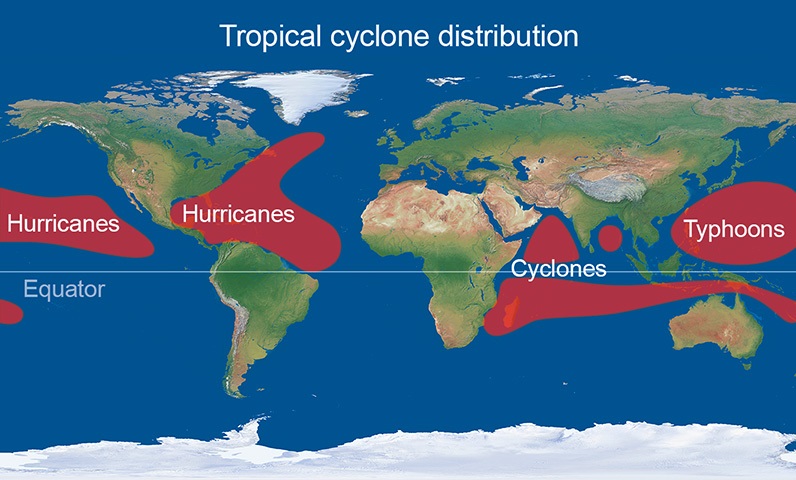The only difference between a hurricane, a typhoon, and a cyclone is where in the world the storm occurs.
Hurricanes, cyclones, and typhoons are all types of tropical storms capable of stirring up significant destruction and loss of human life. Despite their differing names, however, there’s actually very little difference between them.
What's the difference between hurricanes and typhoons?
The only difference between a hurricane, a typhoon, and a cyclone is where in the world the storm occurs:
It’s called a hurricane if it’s in the North Atlantic, central North Pacific, or eastern North Pacific oceans.
It’s called a typhoon if occurs over the Northwest Pacific Ocean to the east of Asia,
Meanwhile, it’s called a cyclone if it occurs in the Indian Ocean and parts of the South Pacific.
There’s no clear reason why we still stick to this system other than paying homage to the regions of the world where the word emerged.
The word hurricane stems from the Spanish word huracán, which relates to the Maya god of wind, storm, and fire called Huracan. The earliest written use of the term dates to around the mid-16th century by Spanish colonialists sailing to the Americas.
The origin of the word typhoon isn't totally clear, but it’s thought to have ties to the word tufan, which appears in Greek, Arabic, Chinese, and Hindi, meaning something like "big cyclonic storm."

Generally speaking, we can refer to all three as tropical cyclones.
A tropical cyclone can is defined as a rapidly rotating storm with a low-pressure center and clouds spiraling towards the eyewall surrounding the "eye,” according to the World Meteorological Organization. As a result of Earth’s rotation, the winds blow counterclockwise in the Northern Hemisphere and clockwise in the Southern Hemisphere.
This swirling mass of violent wind can be vast, with its diameter typically spanning 200 to 500 kilometers (124 to 310 miles), but capable of reaching up to 1,000 kilometers (621 miles). It’s defined as a tropical depression when the maximum sustained wind speed is less than 63 kilometers (39 miles) per hour. Once it gathers a maximum sustained wind speed that’s faster than this, it can be defined as a tropical cyclone.
Why do we name hurricanes?
Regardless of whether you’re dealing with a hurricane, cyclone, or typhoon, they will often be given a name if they reach a certain strength, scale, and potential for destruction. These names are generally assigned to them from predetermined lists, depending on the basin in which they originate.
For hurricanes, these names tend to be human names. In 2023, for instance, they will be named Arlene, Bret, Cindy, Don, Emily, Franklin, and so on.
The purpose of the naming system, which was first rolled out in the 1950s, is to streamline communication about the storms. After all, people are more likely to acknowledge and remember a storm with a personable name, rather than just a list of digits or a date.
The names of the deadliest storms, such as Hurricane Katrina, are retired as a mark of respect for the devastation and loss they caused.
- Karlston
-

 1
1




Recommended Comments
There are no comments to display.
Join the conversation
You can post now and register later. If you have an account, sign in now to post with your account.
Note: Your post will require moderator approval before it will be visible.